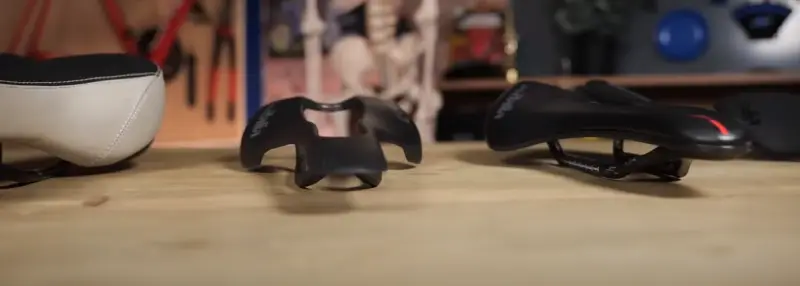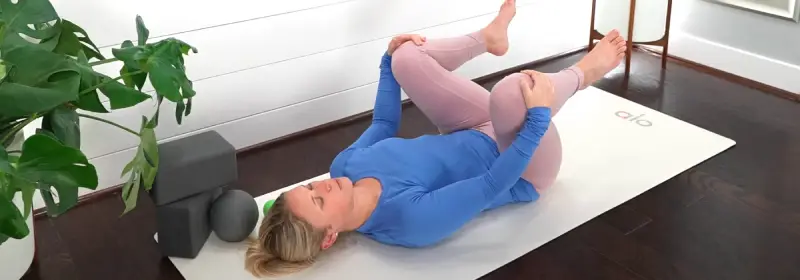Pudendal nerve damage in cycling, known as pudendal nerve entrapment (PNE), is caused by prolonged sitting pressure, nerve rubbing from pedal motion, and high seat pressure. These factors create conditions leading to PNE for long-distance cyclists.
Treatment for pudendal nerve damage in cycling may involve conservative measures, physical therapy with or without TENS, pharmacological treatment, nerve decompression surgery, and neuromodulation. Pudendal nerve entrapment and neuropathy are conditions that are not extensively studied.
This blog post discusses preventive measures and treatment options for pudendal nerve damage caused by cycling.
Pudendal Nerve Damage Cycling Treatment: 6 Key Fixes

Cycling is a great way to stay fit and enjoy the outdoors, but riding in a way that protects your body is essential. Here are some tips to help you cycle pain-free and prevent pudendal nerve (PN) damage.
Ergonomic Cycling Practices
Cycling should be enjoyable, not painful. By adopting ergonomic cycling practices, you can keep riding without discomfort. Here’s what you need to know:
- Sit Right: Finding the correct sitting position on your bike is crucial. This helps avoid putting unnecessary stress on your body.
- Handle with Care: Properly gripping your handlebars ensures good balance and comfort, vital for long rides.
- Take Breaks: Short breaks during your ride can prevent pressure buildup in sensitive areas.
- Maintain Proper Posture: A straight back is vital for evenly distributing your weight on the pudendal nerve.
- Adjust Handlebar Height and Position: Your handlebars should be comfortable to avoid overstressing your arms or back.
- Take Regular Breaks: Standing up and stretching periodically, especially on longer rides, can relieve pressure on the pelvic region.
Proper Bike Fit and Saddle Choice
Like a perfectly fitting shoes, the bike setup is essential to a smooth ride. Here’s what to consider:
- Size Matters: Ensure your bike is the correct size. Sizing incorrectly can cause discomfort and injury.
- Saddle Up: The right saddle can make all the difference. Look for one that fits your anatomy and has adequate padding.
- Get Help: Don’t hesitate to ask for professional advice at a bike shop to find the best fit for your bike and saddle.
Exercises to Strengthen the Pelvic Floor Muscles
Strengthening your pelvic floor muscles is a proactive step towards preventing pudendal nerve pain. Here are some exercises to help:
- Squeeze and Lift: Kegel exercises, which involve tightening and releasing the pelvic floor muscles, can significantly strengthen this area.
- Stay Regular: Consistency is critical. Regularly performing these exercises can provide lasting benefits.
- Patience Pays Off: While it takes time, strengthening your pelvic floor muscles can significantly reduce the risk of PN pain.
Pudendal Nerve Damage Cycling: 4 Treatment Options

Cyclists can consider various strategies to alleviate symptoms when dealing with damaged pudendal nerves from cycling. From taking a break to potentially seeking surgical solutions, the journey to recovery varies depending on the severity of the condition.
Rest and Recovery: The First Line of Defense
Taking a break from cycling and allowing the body to rest is often the first recommended step in treating pudendal nerve damage. This section emphasizes the importance of listening to your body and understanding when to pause your cycling routine to prevent further damage.
- Listen to your body: Pay attention to pain signals and discomfort.
- Modify activities: Consider alternative exercises that put less pressure on the pelvic area.
- Seek professional advice: Seek medical advice for personalized guidance.
Medications: Anticonvulsants and Antidepressants
For some, medications such as anticonvulsants and antidepressants are crucial in managing symptoms of pudendal nerve damage. We will explore how these medications work and who might benefit from them.
- Anticonvulsants: Used to stabilize nerve signals and reduce pain.
- Antidepressants: Can help manage chronic pain associated with nerve damage.
- Consultation required: Always discuss with a healthcare provider before starting any medication.
Nerve Blocks: Temporary Relief from Pain
Nerve blocks are a treatment option that provides temporary relief for those suffering from pudendal nerve pain. This section will explain nerve blocks and how they can relieve discomfort.
- Procedure overview: Injection of a local anesthetic near the pudendal nerve.
- Benefits: Can provide immediate, though temporary, pain relief.
- Considerations: Discuss potential risks and benefits with a specialist.
Surgical Interventions: When is it Necessary
Surgery is considered a final option for patients with severe pudendal nerve damage who have not found relief through other treatments. We will discuss the types of surgical interventions available and the criteria for considering surgery.
- Decompression surgery: The goal is to relieve pressure on the pudendal nerve.
- Assessment: Thorough evaluation by a team of specialists is necessary.
- Risks and outcomes: Understanding the potential benefits and challenges of surgery.
Cycling and Pudendal Nerve Damage: Recovery

When dealing with pudendal nerve (PN) damage from cycling, getting back on track involves more than just a quick fix. It’s about creating a long-term plan that includes recovery, adjusting your cycling habits, and adopting strategies to manage your condition over time. Let’s dive into how you can tackle each of these steps.
Physical Therapy for PN
Physical therapy is essential to healing from pudendal nerve damage. Here’s a closer look at what this journey involves:
- Custom Plans: Healing is not one-size-fits-all. Your therapist will create a program specifically designed for your body and needs.
- Easing Pain: You’ll reduce discomfort and strengthen the muscles around your pelvic area through targeted exercises.
- Steady Healing: Your progress will be monitored closely, allowing your therapist to adjust your plan to ensure the best possible recovery.
Adjusting Cycling Habits Post-Treatment
Once you’ve started your treatment, it’s essential to modify how you cycle to prevent further issues:
- Bike Setup: Adjust your bicycle to make it more pudendal nerve-friendly.
- Take it Slow: Ease back into cycling. Start with shorter, less intense rides and gradually increase your activity.
- Listen to Your Body: If you experience pain while cycling, stop immediately and consult your therapist.
Long-term Management Strategies for Cyclists
Managing pudendal nerve damage is an ongoing process. Here are some strategies to help you maintain your nerve health over time:
- Regular Workouts: Continue with the exercises recommended by your therapist to keep your pelvic area strong and
flexible. - Healthy Choices: Implement lifestyle changes that reduce stress on the pudendal nerve.
- Regular Doctor Visits: Keep up with your doctor appointments to monitor your condition and prevent any recurrence of symptoms.
Conclusion
Cycling and Pudendal Neuralgia (PN) might seem like unlikely companions, but they are intricately linked to many cyclists. Through this exploration, we’ve learned that while cycling can lead to PN, it doesn’t have to end the journey.
Cyclists can significantly reduce their risk of developing PN by adopting ergonomic cycling practices, choosing the right bike fit and saddle, and engaging in pelvic floor strengthening exercises. For those already navigating this challenging condition, rest, medications, nerve blocks, and sometimes, surgical interventions offer a path to relief and recovery.
Tailored physical therapy programs and adjustments in cycling habits post-treatment are crucial steps toward getting back in the saddle safely. Ultimately, the key to a lifetime of cycling lies in maintaining a delicate balance between our passion for riding and the health of our nerves.
It’s about listening to our bodies, recognizing our limits, and protecting ourselves proactively. As we pedal forward, let’s prioritize our nerve health, ensuring our cycling adventures remain joyous and pain-free.
Remember, the journey on two wheels is infinitely more enjoyable when we care for the rider as much as we do the ride. So, to all my fellow cyclists, let’s keep the wheels turning, but let’s do it wisely, safeguarding our nerve health for many more miles to come.
FAQs
Can Cycling Help with Trapped Nerves?
Yes, cycling can help with trapped nerves by reducing pressure on the nerves through low-impact exercise. Incorporating cycling into your routine may improve symptoms and mobility, potentially reducing inflammation in the long run.


